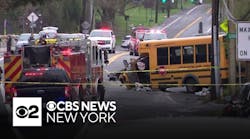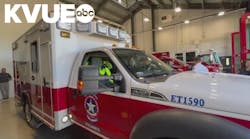The Community Emergency Response Team (CERT) program educates citizens about disaster preparedness, including training on basic disaster response skills, fire safety, light search and rescue, team organization and disaster medical operations. Using the knowledge gained through classroom and practical exercises, CERT members immediately assist first responders by helping those in need from their neighborhood or workplace following a catastrophic event. CERT members are also encouraged to support emergency response agencies by taking a more active role in emergency preparedness projects in their community.
The CERT concept was developed and implemented by the Los Angeles, CA, Fire Department (LAFD) in 1985. The Whittier Narrows earthquake in 1987 underscored the area-wide threat of a major disaster in California. Further, it confirmed the need for training civilians to meet their immediate needs. As a result, the LAFD created the Disaster Preparedness Division with the purpose of training citizens and private and government employees.
The Federal Emergency Management Agency (FEMA) also recognized the importance of preparing citizens. The Emergency Management Institute and the National Fire Academy adopted and expanded the CERT materials, believing them applicable to all hazards. They believe the training and organization brought about by the CERT program further defines the process of citizens understanding their responsibility in preparing for disasters while increasing their ability to safely help themselves, their family and their neighbors.
The CERT program was introduced to the Chesterfield, VA, Department of Fire and Emergency Medical Services through our Emergency Management Office; the first class graduated in 2004. The program is coordinated by a dedicated volunteer, Jon Donnelly, the retired director of the Old Dominion EMS Alliance and no stranger to the department or the important role played by the CERT team in our community. The team has over 300 members from all segments of our community, representing young adults, working professionals and retirees. Each of these volunteer members have received the required 28 hours of initial training and is prepared to assist first responders with disasters at a grassroots level, working in the neighborhoods where they live, work and raise their families. They are prepared to step up at a moment's notice and assist the community and the Department of Fire and EMS in case of a disaster.
We see a wonderful opportunity in our community. We have the potential to expand the role of our CERT members by them forming a closer partnership with the department and providing a higher level of service.
Our organization has a rich tradition in volunteers, but our department and many similar organizations are in the same cycle — we are still recruiting firefighters to fight fires. Where this traditional role is critical to protecting the communities where we each live; continuing this strategy could be detrimental to the expanding services expected by our customers. It is time to revisit the roles of our volunteer firefighters and realign them to better match the expanding needs and expectations of the community we serve. It is time to redefine our recruitment strategies and align them with the services we actually provide to the community. Breaking this trend may be easier than you think, as the new members you are seeking may be as close as your CERT members. These members are a commodity, as they are ready, willing and able to give to the community.
Examine your recruitment strategies to see if they match your community needs; beyond responding to fire or medical emergencies. Identify the endless list of jobs and tasks required to maintain your department, as well as the critical non-emergency programs your customers have come to expect. Daily tasks such as administrative support, bookkeeping, fund raising and maintaining personnel records are just a few examples of responsibilities you can give to a non-operational member of the organization. Additionally, recruit members to teach fire and life-safety programs, install smoke detectors, deliver logistic supplies and provide customer service support; these are all the areas and programs that could be completed by the "volunteer of the future."
The biggest challenge we face is to be willing to change your organizational philosophy concerning the roles of volunteer members in respect to the needs of the organization and the expanding service expected by your community. With this new philosophy in place, you need to revamp recruitment goals, training programs, data-collection needs, and policies and procedures to facilitate this new organizational direction. These changes will not occur overnight, but over time, they will prove successful.
For information on the CERT program, visit http://www.citizencorps.gov/cert/index.shtm. For information about the Chesterfield, VA, Fire and EMS CERT program, contact the authors at [email protected].
MARK R. NUGENT is a battalion chief and 31-year veteran with Chesterfield, VA, Department of Fire and EMS and is currently assigned as the director of community relations. C.E. "GENE" REAMS is a retired division commander for the department and is the executive director of its non-profit community group, Citizens Against Residential Emergencies (CARE).





